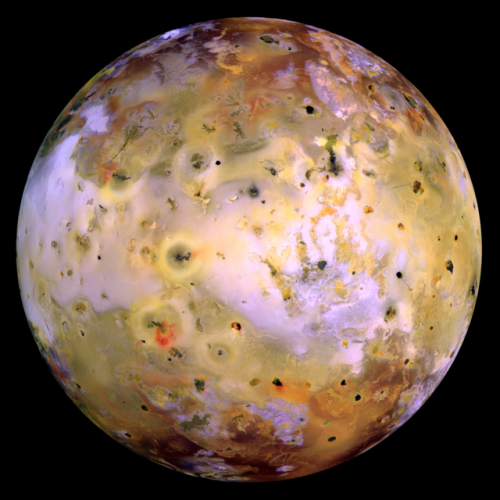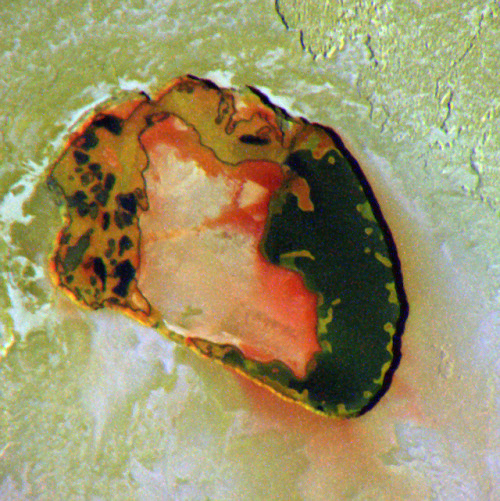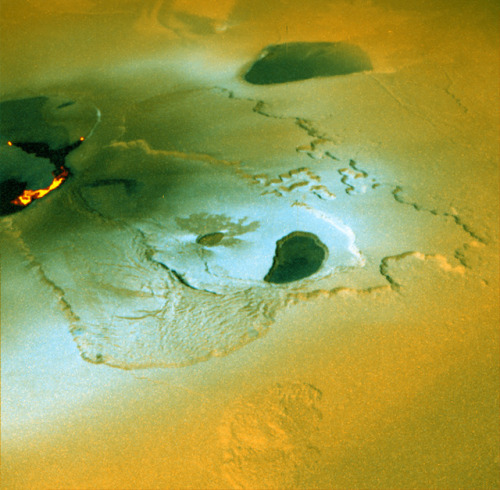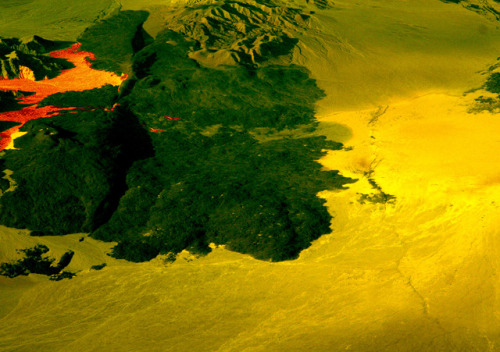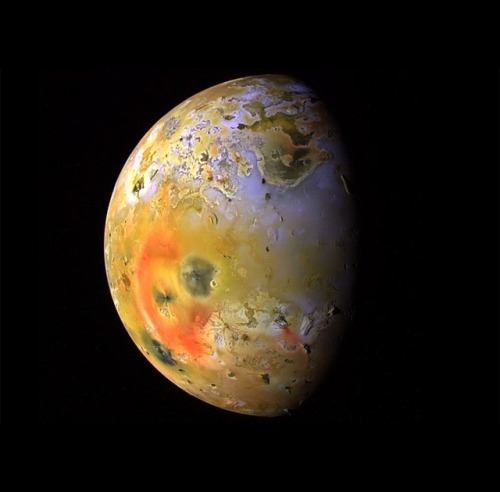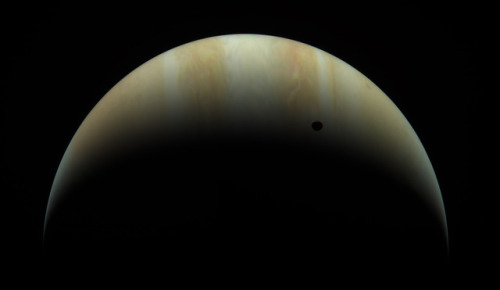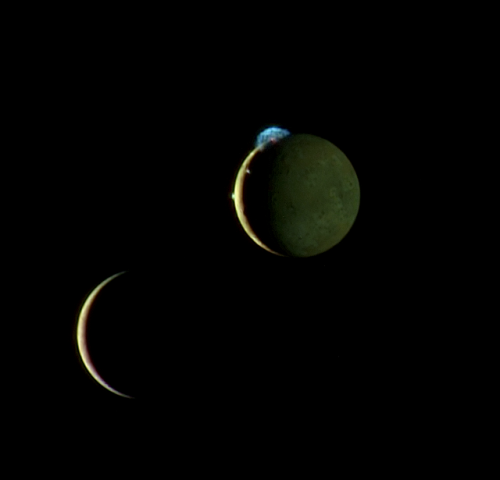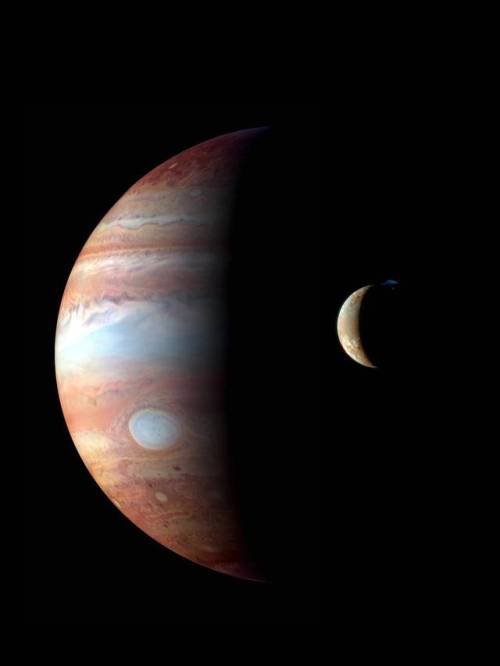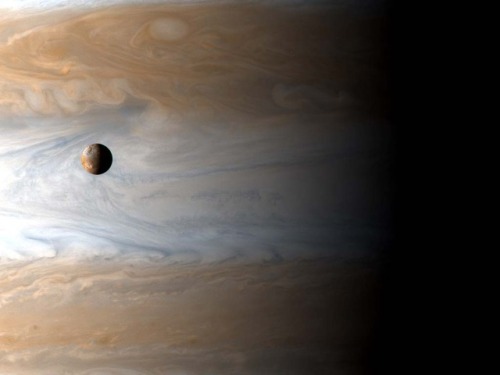Io - The Volcanic MoonLooking like a giant pizza covered with melted cheese and splotches of tomato
Io - The Volcanic MoonLooking like a giant pizza covered with melted cheese and splotches of tomato and ripe olives, Io is the most volcanically active body in the solar system. Volcanic plumes rise 300 km (190 miles) above the surface, with material spewing out at nearly half the required escape velocity.A bit larger than Earth’s Moon, Io is the third largest of Jupiter’s moons, and the fifth one in distance from the planet.Although Io always points the same side toward Jupiter in its orbit around the giant planet, the large moons Europa and Ganymede perturb Io’s orbit into an irregularly elliptical one. Thus, in its widely varying distances from Jupiter, Io is subjected to tremendous tidal forces. These forces cause Io’s surface to bulge up and down (or in and out) by as much as 100 m (330 feet)! Compare these tides on Io’s solid surface to the tides on Earth’s oceans. On Earth, in the place where tides are highest, the difference between low and high tides is only 18 m (60 feet), and this is for water, not solid ground!This tidal pumping generates a tremendous amount of heat within Io, keeping much of its subsurface crust in liquid form seeking any available escape route to the surface to relieve the pressure. Thus, the surface of Io is constantly renewing itself, filling in any impact craters with molten lava lakes and spreading smooth new floodplains of liquid rock. The composition of this material is not yet entirely clear, but theories suggest that it is largely molten sulfur and its compounds (which would account for the varigated coloring) or silicate rock (which would better account for the apparent temperatures, which may be too hot to be sulfur). Sulfur dioxide is the primary constituent of a thin atmosphere on Io. It has no water to speak of, unlike the other, colder Galilean moons. Data from the Galileo spacecraft indicates that an iron core may form Io’s center, thus giving Io its own magnetic field.Io was discovered on 8 January 1610 by Galileo Galilei. The discovery, along with three other Jovian moons, was the first time a moon was discovered orbiting a planet other than Earth.Eruption of the Tvashtar volcano on Jupiter’s moon Io, photographed by New Horizons.Image credit: NASA/JPL/Galileo/New Horizons (Stuart Rankin, Kevin Gill)Source: NASA -- source link
#io#vulcao#vulcano#lava#moon#lua#luna#orbit#orbita#astronomy#astronomia#galileo#galileogalilei#newhorizons#sistemasolar#solarsystem
